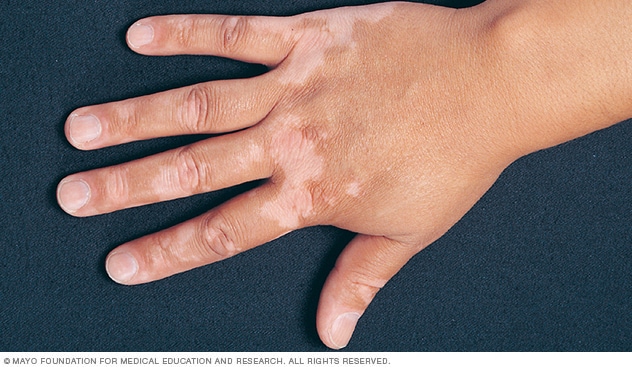can vitiligo be cured in early stages What is the best diet for vitiligo sufferers
Vitiligo is a skin condition that affects many individuals around the world. It is characterized by the loss of pigmentation in certain areas of the skin, resulting in the appearance of white patches. While it may not be a life-threatening condition, it can have a significant impact on an individual’s self-esteem and quality of life. In this post, we will explore the symptoms, causes, and potential treatment options for vitiligo.
Symptoms of Vitiligo
One of the primary symptoms of vitiligo is the appearance of white patches on the skin. These patches can vary in size and shape, and they often develop in symmetric patterns. They are most commonly found on the face, hands, feet, arms, and other areas exposed to the sun. In addition to the skin, vitiligo can also affect the hair and even the inside of the mouth.
Individuals with vitiligo may experience a loss of pigmentation in not just the skin but also the hair. This can result in premature graying or whitening of the hair in affected areas. Furthermore, some individuals may notice a loss of color in the retina of the eye, leading to potential vision problems.
Causes of Vitiligo
The exact cause of vitiligo is still unknown. However, researchers believe that it may be an autoimmune disorder in which the body’s immune system mistakenly attacks and destroys the melanocytes, the cells responsible for producing melanin. Melanin is the pigment that gives color to the skin, hair, and eyes. Genetic factors may also play a role in the development of vitiligo.
Additionally, certain triggers and factors may increase the risk of developing vitiligo. These can include exposure to sunburns, emotional stress, a family history of the condition, and certain autoimmune diseases such as thyroid disorders and type 1 diabetes. It is important to note that vitiligo is not contagious and cannot be passed on to others through direct contact.
Treatment Options for Vitiligo
While there is currently no cure for vitiligo, there are several treatment options available to help manage the condition and improve the appearance of the affected skin. The choice of treatment will depend on the individual, the extent of the condition, and personal preferences. It is crucial to consult a dermatologist or healthcare professional for a personalized treatment plan.
One common treatment option is topical corticosteroid creams or ointments. These medications work by reducing inflammation and inhibiting the immune response in the affected areas. They can help to repigment the skin and reduce the contrast between the white patches and the surrounding skin.
Another approach is the use of calcineurin inhibitors, which also target the immune system to minimize inflammation. These medications are available in the form of creams or ointments and can be effective in some cases, particularly when applied to the face and other sensitive areas.
Phototherapy, using ultraviolet (UV) light, is another treatment option. This involves exposing the affected skin to UV light, either through narrowband or broadband UVB, or Psoralen plus UVA (PUVA) therapy. These treatments can help stimulate repigmentation of the skin by encouraging melanocyte activity.
In recent years, novel treatment options have emerged for vitiligo, such as targeted therapies and surgical procedures. These treatments aim to address the underlying mechanisms of vitiligo, such as melanocyte transplantation, where healthy melanocytes are transplanted to the affected areas.
Conclusion
Vitiligo is a challenging skin condition that can have a significant impact on a person’s physical and emotional well-being. While there is currently no cure, various treatment options are available to manage the symptoms and improve the appearance of the affected skin. It is important to consult with a healthcare professional to determine the most suitable treatment plan for each individual. Apart from medical interventions, individuals with vitiligo can benefit from emotional support and resources to cope with the condition and promote self-acceptance.
 Image: Mayo Clinic
Image: Mayo Clinic
 Image Source: Pinterest
Image Source: Pinterest
Remember, it is important to consult a healthcare professional for an accurate diagnosis and personalized treatment plan.
If you are searching about Can vitiligo be cured with diet and supplements? you’ve came to the right place. We have 5 Pics about Can vitiligo be cured with diet and supplements? like Can vitiligo be cured with diet and supplements?, Can Vitiligo be Cured? Yes it can! But not today - Vitiligo Treatments, and also What is the Best Diet for Vitiligo Sufferers - Vitiligo Cured. Here it is:
Can Vitiligo Be Cured With Diet And Supplements?
 www.drbatras.comvitiligo supplements cured
www.drbatras.comvitiligo supplements cured
What Is The Best Diet For Vitiligo Sufferers - Vitiligo Cured
 vitiligocured.comvitiligo diet sufferers
vitiligocured.comvitiligo diet sufferers
Can Vitiligo Be Cured Just Using Illumination Without Medicine #
 www.pinterest.comvitiligo cured choose board cure medicine
www.pinterest.comvitiligo cured choose board cure medicine
Can Vitiligo Be Cured? Yes It Can! But Not Today - Vitiligo Treatments,
 vitiligocured.comvitiligo cured
vitiligocured.comvitiligo cured
Vitiligo - Symptoms And Causes - Mayo Clinic
 www.mayoclinic.orgvitiligo causes mayo symptoms disease skin hand pigment clinic patches purpose melanin people diseases condition conditions
www.mayoclinic.orgvitiligo causes mayo symptoms disease skin hand pigment clinic patches purpose melanin people diseases condition conditions
Vitiligo diet sufferers. What is the best diet for vitiligo sufferers. Vitiligo supplements cured